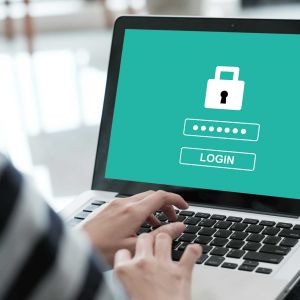October 2022 is Cyber Security Awareness Month.
This is a topic which started over 10 years ago and is led by the USA’s Cybersecurity & Infrastructure Security Agency (CISA) and is shared with the European Cyber Security Month (ESCM).
While the topic may seem ethereal and mired in complicated titles, the principle behind it is very simple and one which every business should take time this month to consider if you haven’t already.
What are you doing to ensure that your business is safe online?
October is a month when many businesses start to focus on the busy period ahead and getting the basics in place before that rush could save you valuable time later on so here are some thoughts and actionable tips.
Cyber Security starts with the simplest of things, which hopefully everyone reading this knows and implements already:
- Move beyond passwords, have passphrases or better still random generated strings of characters
- If it needs to be memorable use 3 random words put together
- Every passphrase should contain a mixture of numbers, lowercase letters, uppercase letters and punctuation, the longer the better – increasing a passphrase from 8 to 10 characters can make it hundreds of times stronger and if you’re not using at least 8 characters already, you should
- Never re-use any passphrase. Every site must be different to prevent an attack on one site allowing attackers into others
- Consider using a password manager to store your passphrases such as LastPass or Dashlane. These only present the passphrase on the expected domain to reduce your chances of being phished, many are free for personal use and low cost for businesses.
- Use Multi-Factor Authentication for everything you can. This requires a second piece of information alongside the password such as a code that is texted to the registered phone.
It’s more than just good passwords
Have you considered becoming Cyber Essentials accredited?
Infotex have gone through the accreditation process, and while we had a good security understanding beforehand this has helped focus everyone’s attention on the issue.
Phishing
Phishing is when a fraudulent email is sent to you asking you to take some action believing the email originated from someone else you know. This is one of the biggest threats to any organisation today with almost a quarter of breaches in the Verizon Data Breach Report 2022 started via a phishing attack.
It is believed that around 3% of all phishing emails successfully entice their viewer to click the link. The emails are often very convincing using a combination of familiarity, based on information colleagues have posted about themselves online (sometimes unwittingly), and also a sense of urgency. It is always worth taking that moment to check because clicking a fraudulent link could be the start of a chain of events you’ll never forget.
Phishing doesn’t just happen via email. Text messages and phone calls are also becoming more common targets for phishing attackers as awareness of email phishing rises.
Ransomware
Ransomware is designed to prevent you from getting access to the files on your computer by encrypting them. You are then invited to pay a ransom to unlock the files.
It is generally recommended not to pay ransoms as you can’t be sure that the attacker will fulfil their side of the deal. You’re also funding organised crime and encouraging future attacks. It is better to invest in good protection and well-protected, external backups that are not directly connected to any device. Ensuring your computing devices and programs are up-to-date and have good antivirus software installed costs very little but offers a lot of protection, also maintain a good policy on keeping the operating system and software patches up to date, such as Windows Updates, finally if you run as a limited user rather than an administrator that often reduces the damage an attacker can inflict.
The Fun One – Play Capture The Flag
Within Cyber Security the term “capture the flag” is an exercise whereby one team set out to obtain some item of data held by another team within the business. If they are able to obtain it then both teams stop, learn how it happened and agree on steps that can be taken to ensure that a genuine attacker could not do so, thus increasing the overall security of the organisation.
You don’t need formal “red & blue teams” to do this, even the smallest of businesses can benefit from trying this, perhaps start by seeing whether one staff member can find the login password (or passphrase) for another member of staff’s computer. is it on a post-it attached to their monitor, is it the name of their child / cat / favourite holiday destination? Do they leave their PC logged in while they take their lunch break allowing anyone to walk up-to and use the PC in their absence?
The aim of Capture The Flag is not to belittle anyone but rather for everyone to learn from the experience and collectively improve your defences.
These are just a few of our thoughts, there’s much more advice available online as well as events in both the virtual and physical world but now you’ve read this article do ask yourself whether even that advice is genuine or is someone trying to get information out of you?



